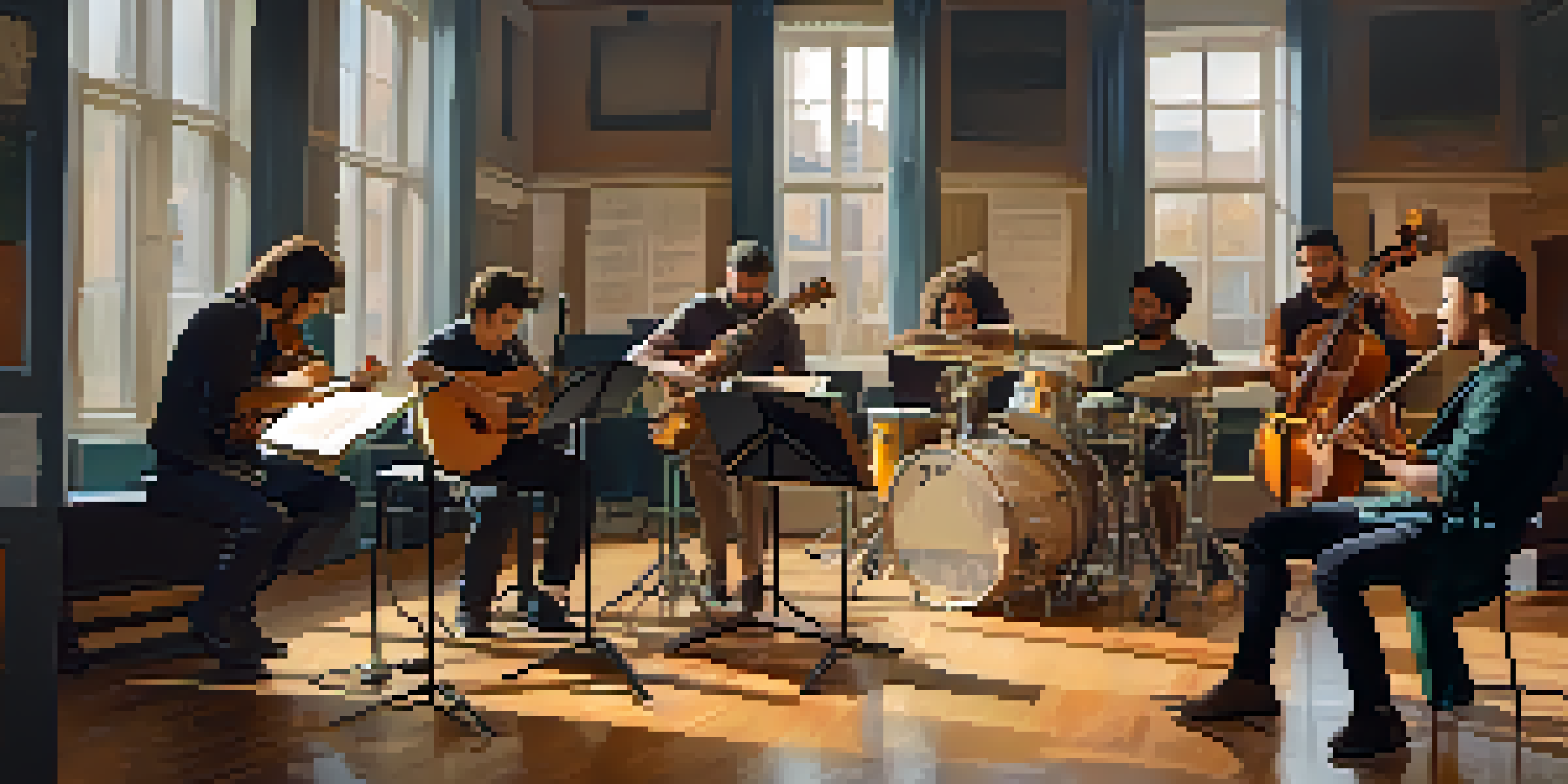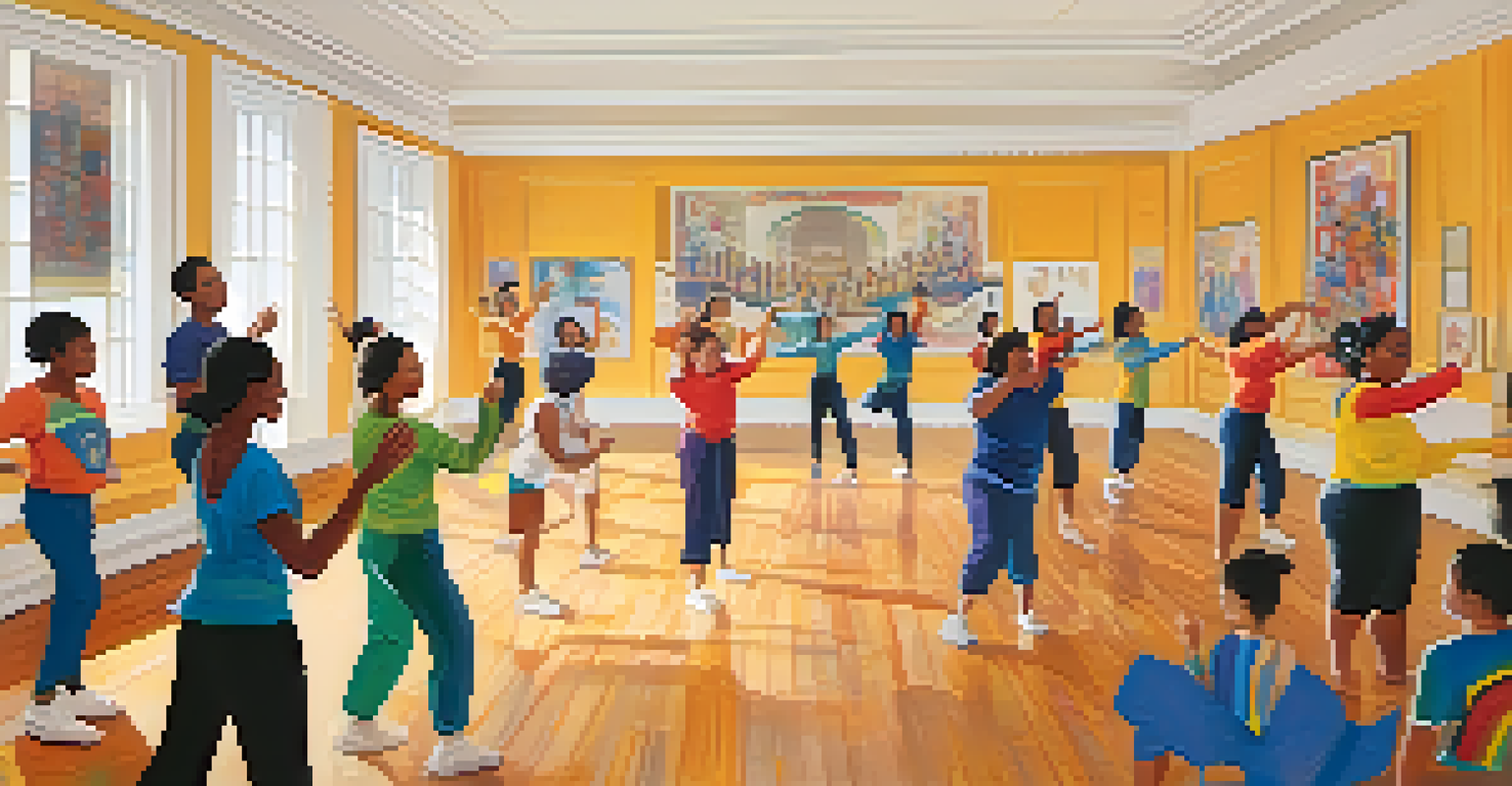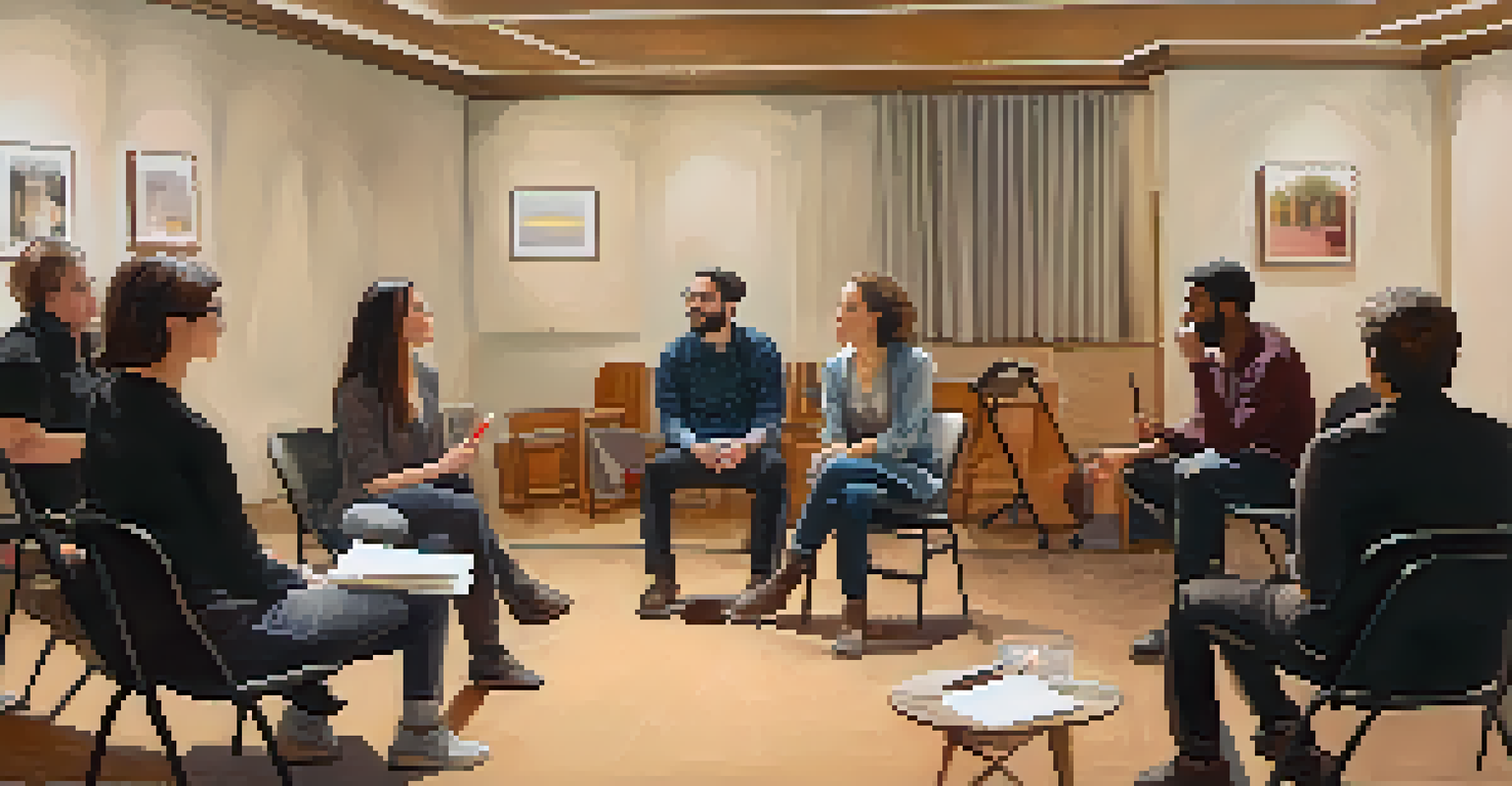Collaborative Rehearsal Techniques for Ensemble Performances

Understanding the Importance of Collaboration in Rehearsals
Collaboration is the heartbeat of any ensemble performance. When musicians or actors come together, their individual talents combine to create something greater than the sum of its parts. This shared effort fosters a sense of unity and allows for more dynamic performances.
Alone we can do so little; together we can do so much.
In ensemble settings, collaboration isn't just about playing or acting together; it's about building trust and understanding each other's strengths. By recognizing the unique contributions of each member, ensembles can create a harmonious atmosphere that encourages creativity and innovation.
Ultimately, embracing collaboration leads to richer performances. When everyone feels valued and heard, it reflects in the energy and emotion delivered to the audience, creating a memorable experience.
Setting Clear Goals for Rehearsal Sessions
Before diving into a rehearsal, it's crucial to establish clear objectives. Whether it's perfecting a specific piece or enhancing ensemble dynamics, having defined goals keeps everyone focused and on track. This clarity is especially important in larger groups where multiple perspectives can easily lead to confusion.

Collaborative goal-setting can be an enlightening process. When all members contribute their ideas and expectations, it fosters a sense of ownership and accountability. Each person is more likely to invest effort when they feel their input shapes the outcome.
Collaboration Enhances Performance
Working together in rehearsals fosters unity and creativity, resulting in more dynamic performances.
Additionally, these goals should be revisited regularly to assess progress. This practice not only helps in maintaining direction but also allows for adjustments based on the ensemble's evolving needs.
Incorporating Feedback and Continuous Improvement
Feedback is a vital element in any collaborative rehearsal. Encouraging constructive criticism among ensemble members helps identify strengths and areas for improvement. This openness creates a safe space where individuals feel comfortable sharing their thoughts and ideas.
The strength of the team is each individual member. The strength of each member is the team.
To make feedback more effective, it can be beneficial to establish a structured approach. For example, using the 'sandwich method'—starting with positive comments, followed by constructive suggestions, and ending with encouragement—can help ensure that feedback is well-received and actionable.
Regularly incorporating this feedback into practice not only enhances individual performances but strengthens the ensemble as a whole. Over time, this leads to a more polished and cohesive presentation.
Utilizing Warm-Up Exercises for Ensemble Cohesion
Warm-up exercises serve as an essential foundation for any rehearsal. They not only prepare the body and mind for performance but also enhance ensemble cohesion. Engaging in group warm-ups fosters a sense of unity and helps establish a collective rhythm.
Consider exercises that focus on listening and synchronization, such as clapping rhythms or vocalizing scales together. These activities not only build technical skills but also promote awareness of each member's timing and presence.
Set Clear Goals for Success
Establishing defined objectives before rehearsals keeps everyone focused and accountable.
Moreover, incorporating fun and creative warm-ups can lighten the atmosphere and reduce anxiety. A relaxed group is often more willing to take risks, leading to more innovative and exciting performances.
Emphasizing Communication Techniques Among Members
Effective communication is the cornerstone of successful collaboration. In ensemble settings, clear communication prevents misunderstandings and ensures everyone is aligned. This can be achieved through verbal cues, body language, and even non-verbal signals.
Encouraging members to express their thoughts openly fosters a culture of transparency. Regular check-ins during rehearsals can help address any concerns and keep everyone on the same page. It's essential that all voices are heard, as diverse perspectives can lead to richer interpretations.
Additionally, creating a shared vocabulary or set of signals can streamline communication during performances. This not only enhances coordination but also builds a stronger sense of camaraderie.
Exploring Creative Techniques for Ensemble Engagement
Engaging the ensemble creatively can transform routine rehearsals into inspiring experiences. Techniques like improvisation, role-switching, or even themed rehearsals can spark innovation and excitement. These activities encourage members to step outside their comfort zones and explore new artistic avenues.
For example, allowing musicians to experiment with different styles or genres during practice can lead to unexpected and delightful results. This playful approach enhances the ensemble's versatility and adaptability.
Feedback Drives Continuous Growth
Incorporating constructive feedback promotes individual improvement and strengthens the ensemble.
Moreover, fostering a culture of experimentation encourages members to share ideas without fear of judgment. This openness can lead to breakthrough moments and strengthen the ensemble's overall performance.
Evaluating Performance Together for Future Growth
After a performance, taking time to evaluate the experience as a group is invaluable. Discussing what worked well and what could be improved helps solidify learning and growth. This collective reflection not only benefits individual members but also enhances the ensemble's future performances.
Consider organizing a feedback session where everyone can share their thoughts and insights. This practice not only deepens understanding but also reinforces teamwork and collaboration.

Additionally, documenting these evaluations can serve as a reference for future rehearsals. By tracking progress and noting changes, ensembles can build on their success and continue evolving together.